By Jeffrey A. Rendall, Images by David Vier and Jeffrey A. Rendall
AUGUSTA, GA – When considering an event so steeped in history and tradition, you might be surprised to learn that going into the 2006 Masters, most people are talking about what’s ‘new’ rather than ‘old’ at Augusta National. And for a large majority of those conversationalists, they’re not liking the ‘newness’ either.
Looking briefly back to last year, all the buzz preceding the 2005 version of the tournament was how one of the ‘big’ four or five players (Tiger Woods, Vijay Singh, Retief Goosen, Phil Mickelson and Ernie Els) was almost certain to be donning the green jacket when all things were said and done on April 10th.
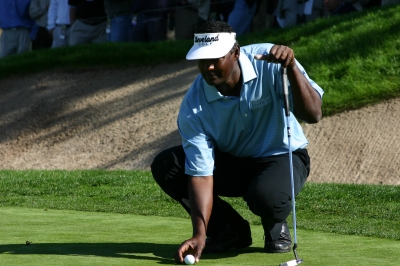 |
| Vijay Singh |
Former Ryder Cup Captain Curtis Strange even said he’d be shocked if a member of that group didn’t win.
Thankfully for Strange and multitudes of golf fans, one of them did. Tiger Woods won his fourth Masters, with most people remembering his fateful (and admittedly lucky) chip-in for birdie on the 16th hole that eventually allowed him to best short-hitting, but ever dogged Chris DiMarco after one playoff hole.
DiMarco wasn’t even supposed to be there at the end, but what gets lost in the discussion of last year’s Masters is the fact that Woods bogeyed the final two holes after ‘the chip’ -- allowing DiMarco back in the door.
In other words, the Masters was more wide-open than people thought, and though one of the favorites actually won, as forecasted, the ‘other’ predilections of doom for the non-bombers failed to materialize.
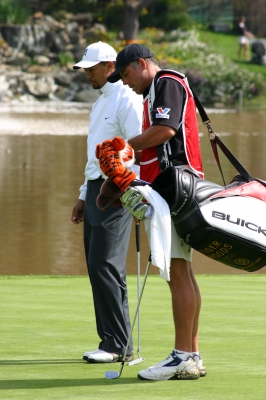 |
| Tiger Woods |
Enter 2006, and it’s like deja vu all over again. Augusta National’s membership has lengthened the course, again, and they’ve also added more trees, deepened bunkers and all but erased the course’s unique and traditional strategy instituted by Alistair Mackenzie and club founder Bobby Jones… leaving people wondering why.
If adding length is designed to test a player’s ability to drive the ball, the changes probably aren’t fulfilling their purpose, since now only the longest players can reach the designated landing areas on some holes, such as the par four 11th, which now measures 505 yards.
If it’s to Tiger-proof the course -- to ‘force’ him and the other long hitters to drive straighter, then it puts double pressure on the shorter hitting players – to not only drive it straight, but they absolutely must hit a driver and place it right nearly every time.
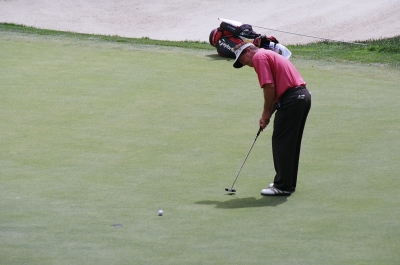 |
| Fred Funk |
We caught up with 2005 Players Champion Fred Funk recently, and he offered his thoughts on the ‘new’ Augusta National: “I’ve only heard about the changes, and if what people are saying is true, it’s a little ridiculous that they’ve gone that far. But if that’s what they think they need to do, then they can do whatever the heck they want.”
Echoing the comments of Jack Nicklaus and Arnold Palmer, Funk reiterated that the beefed-up Augusta National only plays more into Woods’ hands than ever, because it’s more of a one-dimensional golf course now. It’s always been a power player’s golf course, but now’s it’s extreme because they’ve moved the tees so far back on all the holes.
Take for example the par three fourth hole, which now measures 240 yards (it was 205 last year). The fourth green has several areas where they’ve tucked pins in the past, and now most if not all players are going to have to approach it with a two-iron or wood off the tee. This is just one of several holes where the difference is dramatic, and will certainly result in embarrassing numbers for some player before they’re done.
“The greens are so severe,” Funk added, “and there’s so much demand on hitting the ball in the right part of the green where the pin is to have reasonable putts. The guys who are able to play with shorter clubs in their hands have a huge advantage.”
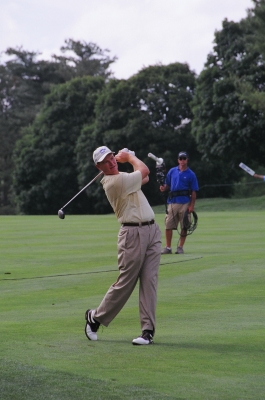 |
| Ernie Els |
When asked who he thought would win, he refrained to 2005. “Physically, there’re maybe thirty guys in the field that have the length to compete there, and then out of those, there are the usual suspects of five, six or seven guys that have the mental ability to get the job done. But there’s only one out of those six or seven that really has the ‘special’ quality that it takes, and that’s Tiger. Tiger can only lose if he beats himself, and he doesn’t usually do that,” Funk said.
No big surprise, of the ‘other’ five or six players that Funk was grouping at the top, he mentioned Ernie Els, Phil Mickelson, Vijay Singh and Retief Goosen. They’re all different players with diverse abilities and temperaments, but the one thing they share is an ability to hit long tee shots. Their shorter shots to the green equals a club or two difference, the essential loft required to hit high approach shots. That’s the recipe for Augusta National, and the reason why Nicklaus was so successful there over the years.
But Funk adds that they’re the best closer to the ground as well: “Those guys are all power players, but they’re also the best putters, so they have the whole game. They’ve got the length, the short game and the mind to compete at Augusta. That’s what the tournament is trying to identify, so I think the top players are going to do it.”
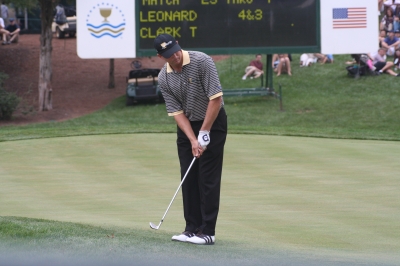 |
| Retief Goosen |
As for Funk’s chances, he shared them with his characteristic sense of humor. “Pretty much zero,” he mused. “Making the cut is my modest goal – to just go out there and have fun, and hopefully I can play well and be around on the weekend.”
“If the course is playing firm and fast, I think I’ve got a chance. If it’s really soft and slow, then I’ve got no chance at all,” Funk concluded.
It’s the same for the rest of the short to moderate hitters – the names Jim Furyk and former champion Mike Weir come to mind. History tells us not to count out the dark horse players, but with each subsequent year, and the onslaught of changes to the golf course, these players will show up less and less.
Ditto for the legends. Arnold Palmer played his last Masters in 2004, and last year Jack Nicklaus bid farewell to the tournament as well. The Masters is losing its unique ability to showcase multi-generational past champions, and that’s one of the biggest tragedies when examining all the ‘newness’ of Augusta National’s layout. The tournament traditionally granted lifetime exemptions to past winners, but now, many of these players will probably decline to play, because they not only can’t compete to win, or even make the cut – they’d have to struggle mightily to avoid looking foolish on a course they once ‘Mastered.’
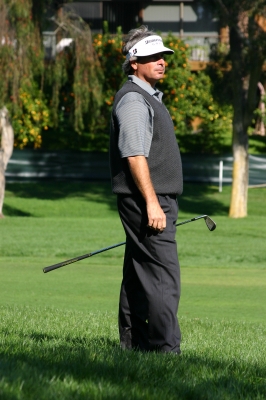 |
| Fred Couples |
As Funk said, the members can do what they want with the course – it’s theirs, and so is the Masters tournament. But if their goal is truly to showcase the best in golf – best players, best tradition, and best golf course – then maybe some looks back to the past would be in order.
Mackenzie and Jones believed the truest test in golf was the second shot, or approach shot to the green. Throughout most of its history, Augusta National was more than friendly off the tee, with no rough and little in the way to prevent players from blasting away – always with the caveat that there were optimal areas in the fairways to place the tee ball, presenting the best chance to approach the greens and pin positions.
Now, it’s a competition to see who can hit it the longest and straightest, and/or make the greatest recovery. That sounds a lot like the strong suit of Tiger Woods.
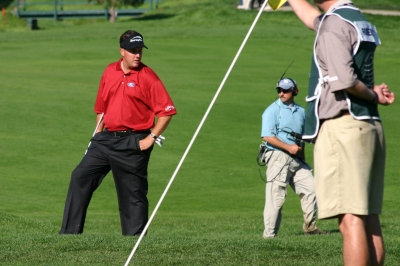 |
| Phil Mickelson |
Add in the fact that Woods’ father Earl is gravely ill with cancer, meaning this could be Tiger’s last chance to do something dramatic for his mentor and best friend – and you’d have to be crazy to bet against him. Tiger doesn’t need a lot of additional motivation to be focused – and in situations where he’s got a little extra incentive, he just doesn’t let it slip. It’s that ‘special quality’ that Funk was talking about.
We normally don’t join the frenzy to pick Woods or any player for any tournament, but we’re picking Tiger to win at Augusta in 2006.
There’s just too much going for him.
Details:
The 2006 Masters Tournament
Augusta National,
Dates: April 6th – 9th
TV Coverage:
| Related Links | Comments on this article? | |
|
Maryland National Golf Club Hollow Creek Golf Club Rocky Gap Resort PB Dye Golf Club in Ijamsville Whiskey Creek Golf Club |
E-mail Jeff Rendall, Editor: jrendall@golftheunitedstates.com |












